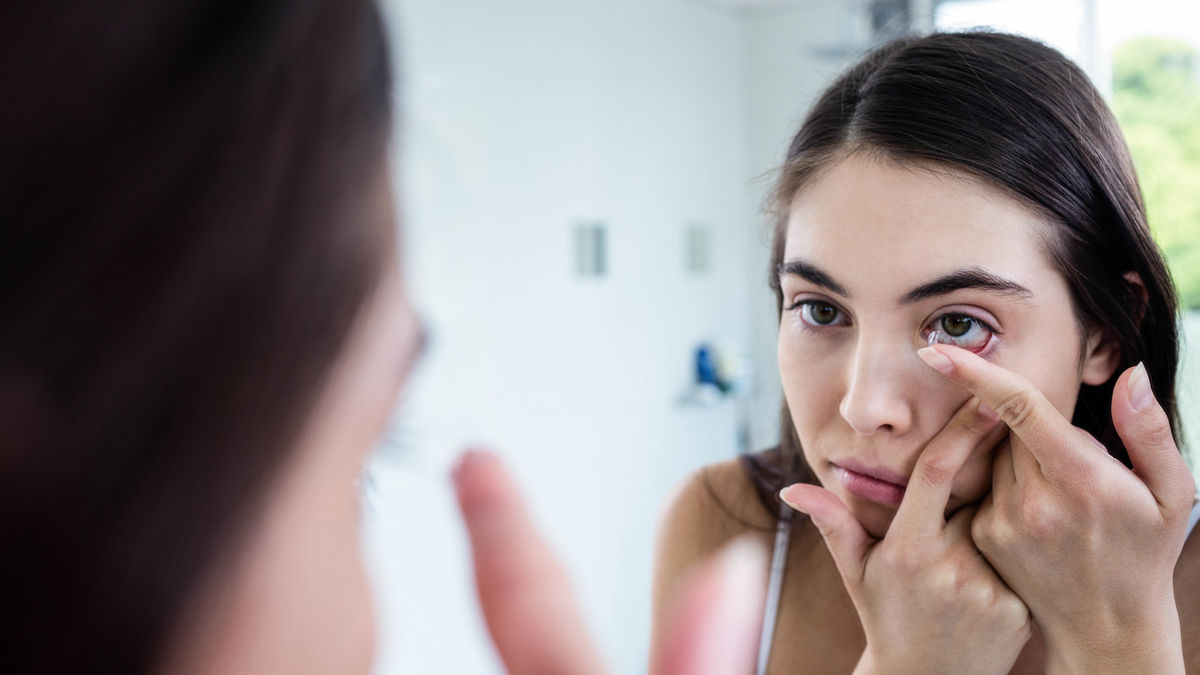Clinical
Fitting orthokeratology successfully on a patient with astigmatism

In this article:
In this post, PC shared with the Myopia Profile community a successful orthokeratology fitting on a patient who had moderate myopia with moderate astigmatism. PC fitted this patient with a custom designed toric orthoK lens. Here are some orthokeratology fitting tips from the Facebook community.
Before fitting orthokeratology, ensure there is no irregular astigmatism or any corneal disease. From the topography results, this patient’s astigmatism is mainly contributed by corneal toricity. The discussion turned to the type of lens design to achieve this ideal fitting.
Spherical vs Toric orthokeratology lens?
- The decision to prescribe a toric orthoK lens depends on the amount corneal toricity instead refractive astigmatism. A spherical orthoK lens can typically be fit on up to 1.50D corneal astigmatism with-the-rule. However, higher amounts of corneal toricity lead to increased likelihood of treatment zone decentration.1
- Hence, toric orthoK lenses are the better option in cases of moderate to high corneal astigmatism as it helps in achieving good lens centration compared to spherical orthoK.2 One could also choose a toric orthoK lens when there is an elevation difference of 30-45μm or more between the steep and flat corneal meridians.
- The toricity of the orthoK is designed on the return curve and alignment curve for better alignment. This will ensure a good fit.
- After deciding on a good lens fit, residual astigmatism can be corrected using either spherical or toric optics. Spherical optics can generally correct up to 1.50D astigmatism, while toric optics are ideal for correcting levels beyond that.
Do younger corneas respond faster to orthokeratology?
- This patient was a 5D myope who achieved unaided vision of 6/6 (20/20) after only one week. With such a swift response, there was a small thread that discussed how quickly a cornea responds to orthoK treatment. Jayakumar et al3 found a reduced epithelial response to orthoK with increasing age - children and young adults (mean age 25 yrs) responded similarly while older adults (mean age 44 yrs) responded more slowly.
- OrthoK does not permanently change the corneal biomechanical properties such as corneal hysteresis (CH) and corneal resistance factor (CRF).4 Research has indicated, however, some baseline biomechanical differences in corneal stiffness and modulus in poor-responders compared to good-responders wearing orthoK.5 Low CH and CRF may also be risk factor of myopia progression. Research has indicated that patients with low CH may benefit from OrthoK to slow myopia progression.6
Take home messages
- When deciding between spherical or toric orthoK lenses, check for corneal toricity rather than refractive astigmatism to achieve a good seal and lens fit.
- Refractive astigmatism can then be corrected with either spherical or toric optics to allow for good visual correction.
- Younger eyes tend to respond faster to orthoK treatments - you can expect patients over 40 to take longer to reach full correction.
- Corneal biomechanical factors also appear to influence orthoK results - but since these are not measured in practice we can expect to see some variation between individuals in the swiftness and maximum treatment level of their orthoK response.
Meet the Authors:
About Connie Gan
Connie is a clinical optometrist from Kedah, Malaysia, who provides comprehensive vision care for children and runs the myopia management service in her clinical practice.
Read Connie's work in many of the case studies published on MyopiaProfile.com. Connie also manages our Myopia Profile and My Kids Vision Instagram and My Kids Vision Facebook platforms.
About Kimberley Ngu
Kimberley is a clinical optometrist from Perth, Australia, with experience in patient education programs, having practiced in both Australia and Singapore.
Read Kimberley's work in many of the case studies published on MyopiaProfile.com. Kimberley also manages our Myopia Profile and My Kids Vision Instagram and My Kids Vision Facebook platforms.
References
- Maseedupally VK, Gifford P, Lum E, Naidu R, Sidawi D, Wang B, Swarbrick HA. Treatment zone decentration during orthokeratology on eyes with corneal toricity. Optometry and Vision Science. 2016;93(9):1101-11. (link)
- Jiang J, Lian L, Wang F, Zhou L, Zhang X, Song E. Comparison of Toric and Spherical Orthokeratology Lenses in Patients with Astigmatism. Journal of Ophthalmology. 2019 (link)
- Jayakumar J, Swarbrick HA. The effect of age on short-term orthokeratology. Optometry and Vision Science. 2005;82(6):505-11. (link)
- Mao XJ, Huang CC, Chen L, Lü F. A study on the effect of the corneal biomechanical properties undergoing overnight orthokeratology. [Zhonghua yan ke za zhi] Chinese journal of ophthalmology. 2010 Mar;46(3):209-13. (link)
- Lam, A.K.C., Hon, Y., Leung, S.Y.Y. et al. Association between long-term orthokeratology responses and corneal biomechanics. Sci Rep 9, 12566 (2019). (link)
- Wan K, Cheung SW, Wolffsohn JS, Orr JB, Cho P. Role of corneal biomechanical properties in predicting of speed of myopic progression in children wearing orthokeratology lenses or single-vision spectacles. BMJ open ophthalmology. 2018;3(1):e000204. (link)
Enormous thanks to our visionary sponsors
Myopia Profile’s growth into a world leading platform has been made possible through the support of our visionary sponsors, who share our mission to improve children’s vision care worldwide. Click on their logos to learn about how these companies are innovating and developing resources with us to support you in managing your patients with myopia.












